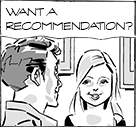Page 45 Review by Jonathan
"The billboards changed every month.
"Ebner wondered what he advertised on the outside.
"But pretended not to care.
"However far he leaned out...
"... it was impossible to see the complete picture."
I knew of Owen only from his hilariously ribald THE MEGATHERIUM CLUB so I was intrigued to see how he was going to tackle a rather less (mis-)anthropological story. Although, although, you could very well argue this is very much anthropology, being a study of one man's personal disaffection with the rest of society, viewed from his peculiar remove. For James Ebner does indeed live between two huge billboards, atop a high-rise building, in a single room, albeit quite plushly equipped and decorated.
Ebner descends down to the mean streets upon occasion, primarily for provisions including his essentials of gin and cigarettes, paramount to maintaining his solitary existence. However, the interactions with proprietors of shops and bars are onerous at best, often prickly affairs that only serve to reinforce Ebner's ennui, despite their repetitive nature meaning these people have acquired a status of Ebner's acquaintance, rather than simply being complete strangers. There is the occasional episode of socialising, prompted by much chivvying from his best, and now only friend, Israel, but these excursions become fewer and fewer as Ebner becomes ever more hermit-like.
We learn a little of his life before he withdrew from society and began living between the billboards, and we gain some sense that he is preparing for something. But what? As Israel remarks,
"You've taken so many steps back for your run up... that you've forgotten why you are jumping."
Ebner disagrees, of course, but what we can see which he cannot, even from his lofty perch without a view atop the city is that he has sequestered himself away by design, entirely of his own volition. Perhaps he never intended to become so cut-off, but now it has happened he's trapped in a mental prison of his own making. Could he escape now even if he wanted to?
Owen works as an architectural illustrator which I can clearly see informs much of his page and panel design. There are some great single pages, the larger picture composed of nine, three by three grid panels, taken from very specific viewpoints: face-on, plan and isometric. My favourite being a view of the underside of Ebner's dwelling, the access ladder rising up to the entry trapdoor in the floor, other taller, surrounding buildings rising away higher all around to a unseen vanishing point miles above his abode. It's a most striking page and I found myself returning to it a few times admiring the composition. Then, other sequences are very much about the passage of time within the exact same space, often viewed from Ebner's personal viewpoint with narration as we attempt to understand the life our protagonist has chosen, is continuing to choose, from without and within.
They're not precise comparisons, but partly due to Owen's architectural background and partly the story of a man losing his place in the world, his very sense of identity, I was strongly minded of ASTERIOS POLYP, and also Paul Auster's CITY OF GLASS. This is clearly not anywhere near as complex a work as either, but there is a sense of... orderly deconstruction... occurring here which is present in both of those works. Clearly David Mazzucchelli who drew both is a very different sort of artist to Owen, but there are strong elements of design underpinning and eloquently informing the narrative of all three. Additionally I was minded of a personal favourite of mine, again, no doubt because of the architectural connection, in CITIZENS OF NO PLACE, which is composed of a number of short stories revolving around design conceits.
In addition, after the main 'Between The Billboards' story, there are eight shorts which form 'The Authoring Of Architecture' part of this book, including a brief essay by Owen explaining his approach to comics. Additionally each short is prefaced by a paragraph of explanation from Owen revealing his thoughts about the work.
They're a great selection of vignettes actually, comprising of some auto-bio bits, some entirely design-led conceits with visual punchlines, plus a particularly powerful one-page comic about an illegal card game which I thought was brilliant. It's composed of one large panel which your eyes naturally, immediately take in first, which in fact turns out to be the conclusion, the disturbing story itself being told by a series of much smaller overlaid panels around the edge, explaining the chain of actions and consequences which leads us to this final panel.
I think Owen is definitely one to watch, there's clearly far more to him than I suspected in terms of his story-telling abilities, both in word and image, than just the jester that wrought the ridiculous THE MEGATHERIUM CLUB, which I thought was comedy gold and I can't wait for more of. I will make the one proviso which I made there once again though; his art style will not be for everyone. I love its sparseness and draughtsman-like approach, but it will challenge some sensibilities. Let yourself be challenged I say, because this is worth it. Also, whilst they last, Owen very kindly provided us with signed bookplates!

